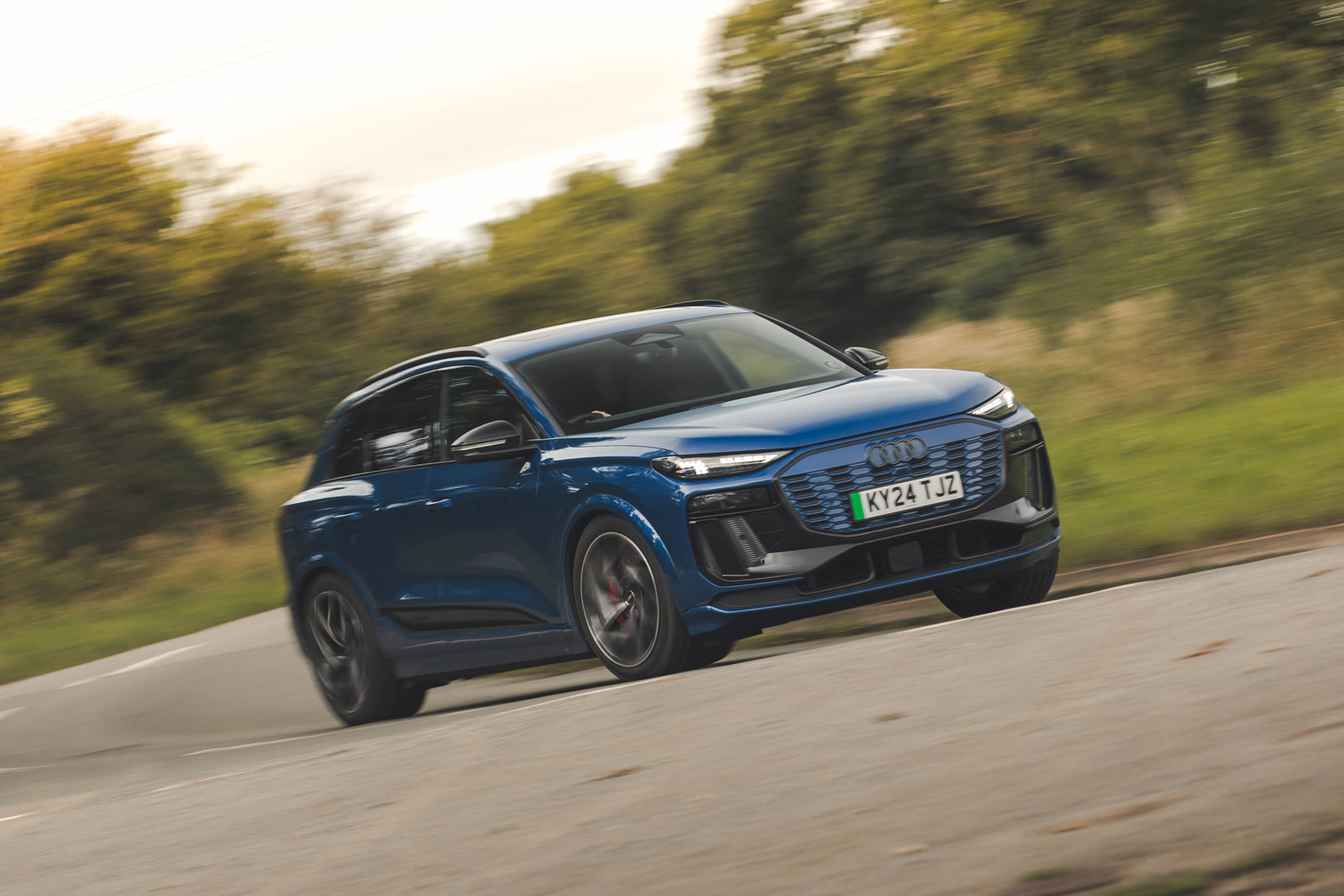The Q6 E-tron’s interior also represents a change of tack for Audi. Most of the physical buttons have gone, and so has the lower screen for controlling the climate and secondary functions that you got in the Q8 E-tron.
Instead, they have all been replaced with one big, curved screen that consists of a 11.9in driver display and a 14.5in touchscreen infotainment system. Audi calls it the MMI panoramic display. Optionally, the passenger gets a separate touchscreen too. This is, in our view, a significant backwards step, from both usability and design appeal perspectives.
The touchscreen itself runs the familiar Audi MMI system and works reasonably well, as these things go. There is a bar on the bottom that contains the climate controls and a cluster of shortcut buttons on the right. Both are shown permanently, even when using Apple CarPlay or Android Auto, each of which can connect wirelessly. The screen responds to taps and swipes quickly, and no longer requires a firm press like Audi touchscreens have done for years.
The menu structures are mostly logical, but some operations do take too many actions, and having to stretch out your left arm and find something on the screen for absolutely everything is just not a luxury experience.
We were also unimpressed by the standard navigation system. Although it uses Google data and looks superficially impressive, it has two major flaws. The map is always displayed in satellite view, which may look pretty but is too busy and not clear enough for use on the move. The system also doesn’t give you the option to select an alternative to the default route.
In general, the interior simply looks like that of a generic modern car, with its simplified dashboard that is little more than just a screen. It also exhibits few of the traditional Audi qualities, as the build quality is nothing special (our test car wasn’t free from the odd creak and rattle), and there are too many hard and shiny materials for the price.
In addition to the screens, there’s a slab of gloss black plastic on the centre console. It includes the few buttons that there are – for the drive modes, stability control and start/stop button, so they quickly get covered in fingerprints. There’s some unappealing plastic around the air vents, and the rough-structured trim inserts don’t look or feel particularly special either.
The space on offer is about average for the mid-sized SUV class – and on a par with a Genesis GV70 – but for a car on a dedicated EV platform, we expected some more rear leg room. The Mercedes EQE SUV does better in this respect.

